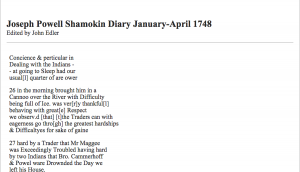When it comes to reading just any material, close reading isn’t the first thing that jumps into your head. Reading a body of work usually consists of starting at the top of the page and reading the at least most of the words. Close Reading is a completely different story.

Using Oxygen to make a piece of work thatis able to be published and looking presentable is a wildly different story than just reading. With Close Reading, there has to be tags, arguments for what word or phrase is in what category and even nested tags. Elena Pierazzo demonstrates this perfectly by saying “The process of selection is inevitably an interpretative act: what we choose to represent and what we do not depends either on the particular vision that we have of a particular manuscript or on practical constraints.” Basically every tag is either optional, not necessary, or could be tagged a different way.

According to Tanselle in the same article, “A Rationale of Digital Documentary Editions” by Elena Pierazzo, “the editor’s goal is to reproduce in print as many of the characteristics of the document as he can”. This means continue to tag until there is officially nothing left to do, which I agree with. Marking up the Powell Diary has made me realize what goes into an old writing like this piece from 1748. From understanding the

different places to people and the actions in between, a TEI-complaint mark up makes the editor think about what is actually happening between places and people.
Pierazzo asks, “If a transcription consists of ‘a systematic program of selective alteration’ (Huitfeldt and Sperberg-McQueen, 2008, p. 302) and is a substantially interpretative act, is it then possible to maintain some level of objectivity in performing such operations?” As an editor of TEI-complaint make ups, I would have to say yes, although most of the confusing tags were discussed and resolved to make it as smooth as possible. This tagging process wasn’t only to make the transcription ready for publication but also will be used to be able to pull out themes and concepts from the work.